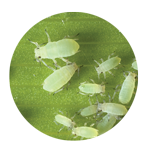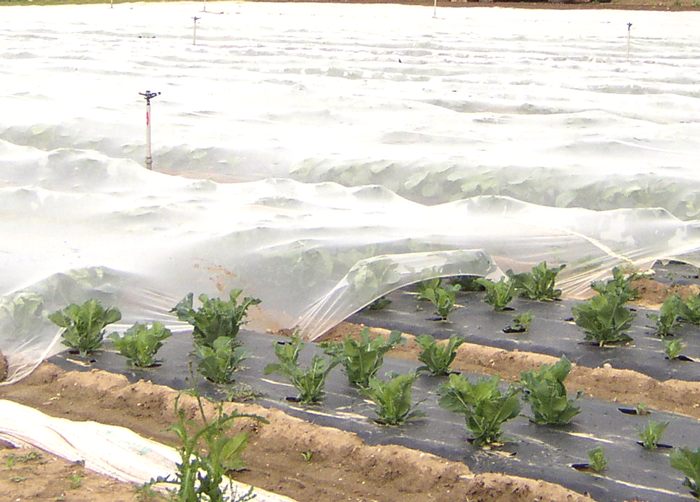Aphids
Definition

Less than 4 mm long, they have a bulbous abdomen and can be of several different colors. They are among the most destructive pests of crops in temperate regions. Winged aphids are particularly dangerous to crops because they destroy plants much more quickly than regular aphids.
Often when we talk about aphids, or aphids, we are referring to a large family of insects with over 4,000 species of pests that attack specific plants.
Several growing techniques can prevent or minimize aphid attacks.
Aphid proliferation

From the first winter eggs all females emerge as apterans (wingless), if space is at a premium, the aphids will become winged to expand their territory.
A female can live for 25 days, during which time she can generate up to 80 new aphids. Spring and summer reproduction is asexual, therefore without male individuals.
Symptoms

Aphids can cause reduced growth rate, mottled leaves, yellowing, stunted growth, curled leaves, browning, wilting, stunted crops and plant death.
Extraction of the elaborated sap weakens the plant and causes a metabolic imbalance that bends the leaves and, in extreme cases, results in leaf loss. Defoliation influences the quantity and quality of the final crop. Aphids also introduce toxins into the plant, systematically altering its development.
The honeydew secreted by the aphids represents the culture medium par excellence for several types of fungi that will form a barrier on the leaf, preventing it from absorbing the light that touches it.
Nevertheless, the most harmful consequence for plants remains the transmission of viruses (without remedy). Aphids, especially the winged generations, can transmit dozens of viruses from a sick plant to a healthy one in just a few seconds.
So without treatment you risk losing your entire crop.
How to control aphids?

Several steps are necessary to control aphids:
- Remove the weeds that serve as a reservoir for eggs and adults
- Put insect nets (sometimes impregnated with insecticide) to cover the plants
- Do not overuse nitrogen fertilizers
- Discard plant debris
- Introduce plant species that can serve as a reservoir for predators such as lacewings
Biological control
Predators of aphids include ladybugs and lacewings.
Lacewing larvae (Chrysoperla sp.) are voracious aphid predators.